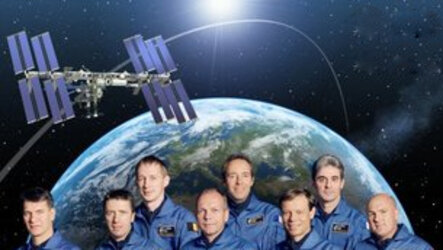New bedrest adventure adds artificial gravity
The human body is made for living on Earth – take away the constant pull of gravity and muscles and bones begin to waste away. Living in space is hard on astronauts and ways must be found to keep them fit and safe.

ESA and NASA are planning to confine human subjects to bed for 60 days in 2017 in Cologne, Germany to probe the effects of spaceflight, with periods in a centrifuge to test if artificial gravity can keep them healthy.
Bedrest studies offer a way of testing measures to counter some of the negative aspects of living in space. Volunteers are kept in beds with the head end tilted 6° below the horizontal. For 60 days one of the subject’s shoulders must be touching the bed at all times.
As blood flows to the head and muscle is lost from underuse, researchers can investigate changes and test techniques from diet to physical exercise.
Human centrifuge for artificial gravity

The study will be conducted at the DLR German Aerospace Center’s :envihab flagship site in Cologne. Built from the ground up to research the human body under spaceflight conditions, it allows researchers to change almost every aspect of the environment, including humidity, daylight and temperature.
ESA and DLR have already run their first study – spare a thought for the 12 brave volunteers who finished 60 days in bed last November – but this one will be the first to use the facility’s centrifuge. By spinning the subjects, the blood is encouraged to flow back towards the feet.

The advantage of artificial gravity is that it has the potential of reducing most of the negative effects of weightlessness on the human body in one go.
:envihab’s centrifuge can adjust the centre of spin so that subjects can be spun around their heads or chests. Changing the position could have far-reaching consequences for rehabilitation but, as this is a new domain, nobody knows yet.
Jennifer Ngo-Anh, leading ESA’s human research, says, “I am happy to start this new bedrest study with our friends and colleagues from NASA, our first in 10 years. This study begins a series of bedrest studies focusing on artificial gravity, making use of the ESA-built centrifuges in Cologne and at MEDES in Toulouse, France.
“This exciting research platform offers scientists around the world a way to collect results and contribute to long-duration missions to the Moon, Mars and even beyond.”
The results are helping astronaut physicians to design better ways for astronauts to keep fit, but the knowledge is also directly applicable to bedridden people on Earth.
Scientists are invited to submit research proposals via this link. The letter of intent is due by 15 February, with a workshop at ESA’s technical heart, ESTEC, on 22 February.















 Germany
Germany
 Austria
Austria
 Belgium
Belgium
 Denmark
Denmark
 Spain
Spain
 Estonia
Estonia
 Finland
Finland
 France
France
 Greece
Greece
 Hungary
Hungary
 Ireland
Ireland
 Italy
Italy
 Luxembourg
Luxembourg
 Norway
Norway
 The Netherlands
The Netherlands
 Poland
Poland
 Portugal
Portugal
 Czechia
Czechia
 Romania
Romania
 United Kingdom
United Kingdom
 Slovenia
Slovenia
 Sweden
Sweden
 Switzerland
Switzerland











































